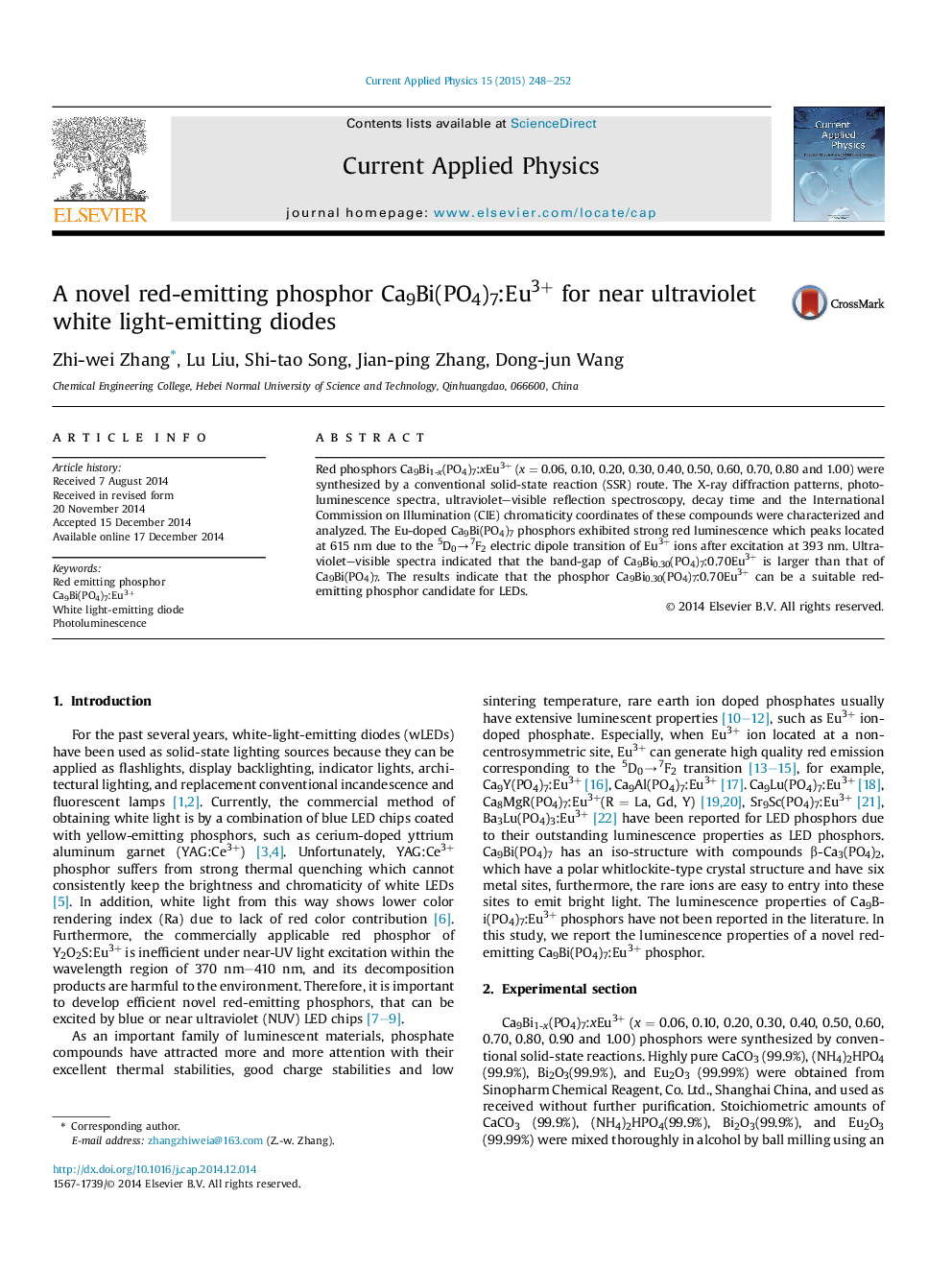| Article ID | Journal | Published Year | Pages | File Type |
|---|---|---|---|---|
| 1785686 | Current Applied Physics | 2015 | 5 Pages |
•The novel Ca9Bi(PO4)7:Eu3+ red-emitting phosphor was synthesized.•The PLE, PL, decay curves, Ultraviolet–visible spectroscopy and CIE of the phosphor were investigated.•Ca9Bi(PO4)7:Eu3+ could be a potential red-emitting phosphor for LEDs.
Red phosphors Ca9Bi1-x(PO4)7:xEu3+ (x = 0.06, 0.10, 0.20, 0.30, 0.40, 0.50, 0.60, 0.70, 0.80 and 1.00) were synthesized by a conventional solid-state reaction (SSR) route. The X-ray diffraction patterns, photoluminescence spectra, ultraviolet–visible reflection spectroscopy, decay time and the International Commission on Illumination (CIE) chromaticity coordinates of these compounds were characterized and analyzed. The Eu-doped Ca9Bi(PO4)7 phosphors exhibited strong red luminescence which peaks located at 615 nm due to the 5D0→7F2 electric dipole transition of Eu3+ ions after excitation at 393 nm. Ultraviolet–visible spectra indicated that the band-gap of Ca9Bi0.30(PO4)7:0.70Eu3+ is larger than that of Ca9Bi(PO4)7. The results indicate that the phosphor Ca9Bi0.30(PO4)7:0.70Eu3+ can be a suitable red-emitting phosphor candidate for LEDs.
